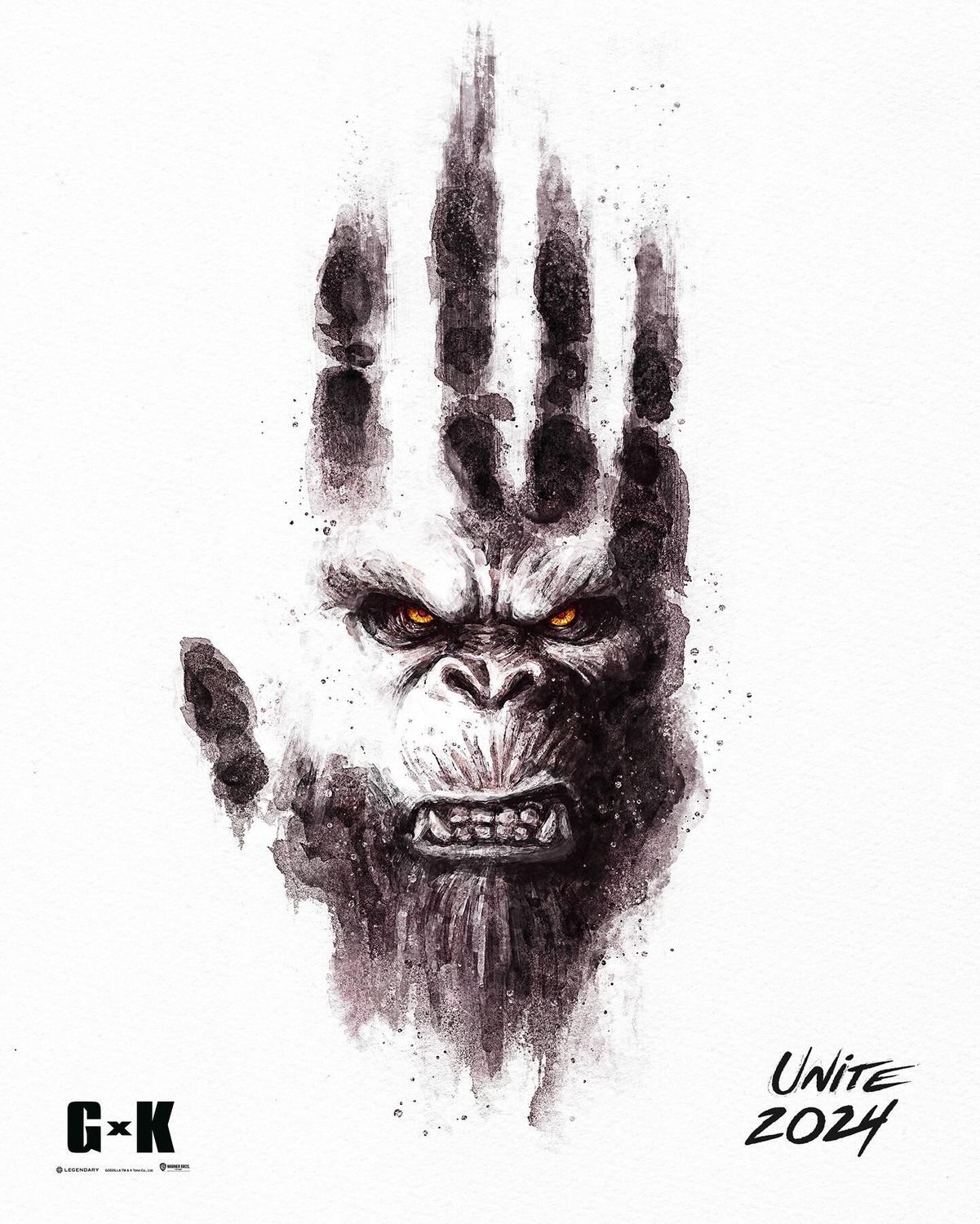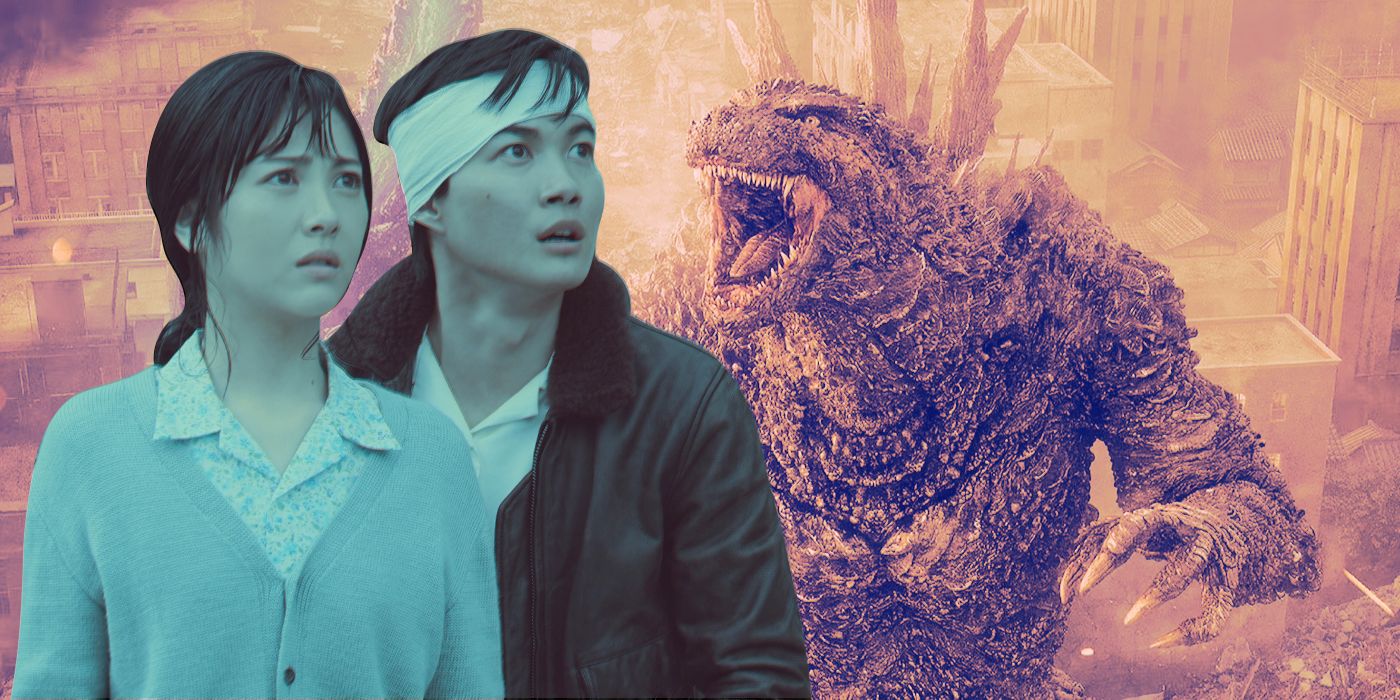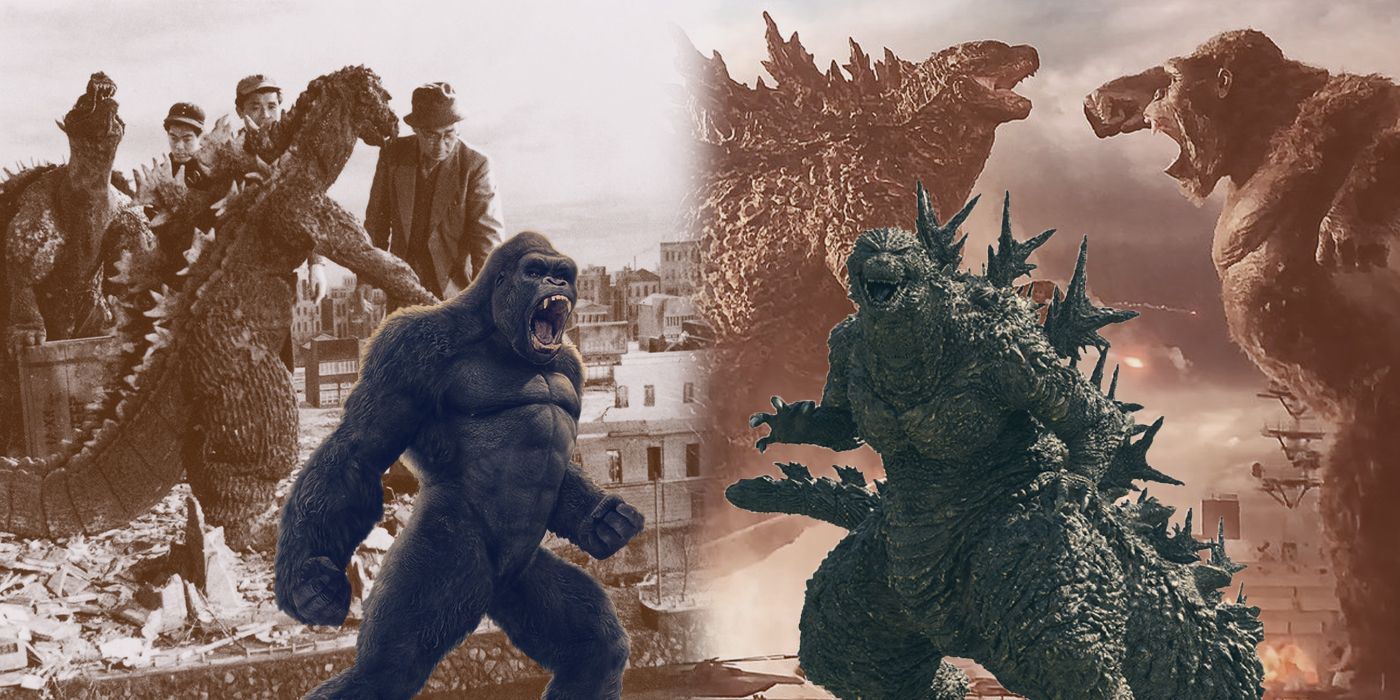Summary
- Godzilla x Kong: The New Empire showcases the timeless appeal of absurdly oversized monster battles.
- The rivalry between Kong and Godzilla dates back to 1962, when they first met on screen.
- The impact of King Kong and Godzilla on cinematic history has endured over the years, aided by a mutually beneficial relationship that has kept both IPs relevant.
Hitting theaters as we speak, Godzilla x Kong: The New Empire is the next chapter in the Legendary Pictures/WB/Toho Company's MonsterVerse, illustrating the simple pleasures of the monster genre. Swapping stop-motion for men in suits and, ultimately, CGI, the spectacle of the genre has only intermittently waned.
Hoping to revive interest in the classic monsters King Kong and Godzilla, Adam Wingard's blockbuster follows a tangled tradition that most fans wouldn't believe. Launching in the earliest days of special effects and trick photography – just a few years removed from the end of the silent era – the delightfully ridiculous B-movie King Kong took the mainstream movie-going crowd by storm.

Godzilla x Kong: The New Empire
- Release Date
- March 29, 2024
- Director
- Adam Wingard
- Cast
- Brian Tyree Henry , Rebecca Hall , Dan Stevens , Rachel House , Alex Ferns
Dreamed up by adventurer Merian C. Cooper and co-directed by Cooper and Ernest B. Schoedsack, the RKO film King Kong was one of the first bona fide blockbusters, proving sci-fi and fantasy should be respected by studios, though they rarely were. Its influence would cast a large shadow, just not in the country Cooper thought it would. Across the planet, an unknown cameraman named Eiji Tsuburaya took notice. 20 years later, he'd respond to the American film with Japan's response in the form of 1954's Gojira, better known in the West as Godzilla.
Capitalizing on anti-nuclear weapons sentiment, in the first Godzilla, Tsuburaya's reptilian beast was born in the aftermath of rampant atomic testing, spawning a biological anomaly that took its revenge on humankind. These ominous warnings were sliced out of the American edit, and the story turned into a shlocky mess, with new scenes tossed in awkwardly, the wallpaper a dead giveaway of re-shoots. That re-edit is merely one facet of a shared but markedly divergent universe built for two different audiences. The monster genre, King Kong, and his innumerable imitators have served as a vessel for every imaginable social message, sensibility, and creepy fantasy of film directors.
King Kong and the Stop Motion Origins
The earliest inspiration for Godzilla can be traced back to 1933's King Kong. However, the origins of the genre are far more bizarre. Ray Harryhausen's radioactive-monster-themed The Beast from 20,000 Fathoms also played a considerable role in the ideation of Godzilla, and Harryhausen reportedly refused to acknowledge Godzilla to his dying day.
So, while it's incorrect to cite Tsuburaya's creation as a blatant knockoff of King Kong, the Japanese cinematographer had long fantasized about making his own project to rival that of Cooper's world-famous ape epic. For hours, Tsuburaya devoted himself to studying his own private copy of the movie, scrutinizing the stop-motion techniques of O'Brien, and analyzing its special effects a frame at a time. His skills were so sharp that his exploding miniatures of Pearl Harbor were deemed photo-realistic when the US Army seized his wartime propaganda films.
Cooper and Tsuburaya knew that the films were only possible through appropriate, believable special effects (by the standards of the time, mind you). Author David Kalat writes that the Japanese producers almost passed on it altogether. Godzilla might have been made sooner, but due to a stigma around special effects, the Japanese film industry clung to a stale, conservative interpretation of movie-making until after World War II, discouraging sci-fi or experimentation.
Cooper didn't face that level of shaming, but he only got his movie greenlit thanks to Willis O'Brien's groundbreaking miniatures. Through an agonizingly slow and meticulous process, King Kong was filmed through stop-motion animation, each frame captured, paused as O'Brien adjusted the figure a millimeter or two, only to repeat the process thousands of times to get a couple minutes of Kong in action, selling the illusion he is toting around actress Fay Wray.
Funny enough, the struggle to get Godzilla to the screen echoed Cooper's laborious trek to make his towering ape a reality in the '20s and '30s, one of many similarities. After shopping his pitch around Hollywood, Cooper finally convinced RKO Pictures to take a gamble on the tragic tale of the beast only love could tame. Cooper, like his young admirer Tsuburaya, spent a stint in the armed forces, turning to filmmaking.
According to The Hollywood Reporter, his brainstorm for monster battles came about after a trip to Komodo Island to see the famed monitors, envisioning just the gorilla vs lizard battle that would only take place in 1962. From there, he extrapolated the plot of a captured wild animal escaping from its confines to run amok in New York City.
Something you're sure not to read in the WB press material for the upcoming Godzilla x Kong: The New Empire is that Cooper took cues from a notoriously phony documentary. The angle about a tribe appeasing a rampaging ape by offering him a woman? That plot point has been traced back to a racist 1930 safari travelogue called Ingagi by William Campbell. Contrary to reports, Ingagi isn't lost, but maybe it should be.
.jpg)
The Best Kaiju Movies that Don't Feature Godzilla or King Kong, Ranked
A look at the best giant monster films across the world that don't feature the two creatures that dominate the genre.Godzilla Soon Became a Cash Cow
Decrying the unknown and grotesque effects of radiation, the Japanese responded to Godzilla on many levels. The narrator in the American version summed up the carnage:
This is Tokyo... What has happened here was caused by a force which, up until a few days ago, was entirely beyond the scope of man's imagination.
That said if you like chilling backstories and complex explorations of social taboos and how nature points out the folly of man, to quote Blue Öyster Cult, then don't watch the rest of the Godzilla movies. From here, it was purely about cashing in; sequels churned out so quickly that the studio didn't even bother to wait for the original director and co-writer, Ishirō Honda, when they immediately shoved the sequel into production.
In the aftermath of Godzilla's glorious release, Tsuburaya started his own special effects company, still in existence today, acknowledged as the "Father of Tokusatsu" (miniatures) and progenitor of the kaiju genre (Japanese monster flicks). Godzilla would carry on. In appreciation of the film's technical feats, horror director John Carpenter honored Honda as “one of my personal cinematic gods.” Some of these films are regarded as classics, while the output inevitably suffers from terrible installments.
From 1954 onward, the novelty embedded itself deep into the psyche of generations of Japanese writers. To say nothing about the Godzilla knockoffs, no, we didn't forget about you, Gamera fans. Godzilla's legacy is evident in such works as Toei Company's Super Sentai (The Japanese production that was later adapted in the US as Mighty Morphin Power Rangers), Hajime Isayama's Attack on Titan, and Fumito Ueda's Shadow of the Colossus. Godzilla's American rival? Well, King Kong's reputation was so low at home that Warner Brothers rented him out abroad to make any profit off the IP, taking over after RKO folded.

Why You Still Can't Stream Godzilla Minus One Despite Its Oscar Win
Despite having an Academy Award, audiences are not able to watch Godzilla Minus One. Here is why the movie may not be available to stream.King Kong and Godzilla Will Always Be Rivals
Grudges aside, the two iconic film properties have a comfy little relationship, hooking up more than once in an unofficial cinematic monster universe. Their long-distance rivalry finally came to a head in 1962 when King Kong and Godzilla squared off in the fittingly titled King Kong vs Godzilla.
This third film, the second directed by Honda, was succeeded by Mothra vs. Godzilla. The fourth official entry in the Godzilla franchise cemented Godzilla as the ultimate monster and linchpin of the Japanese film industry. Many films would follow, introducing the familiar lineup of Ghidorah and Mechagodzilla to the fight card. Sadly, King Kong's popularity was dead in America, though the 1976 reboot would briefly spark new interest.
Yet it was the brawl between the lovelorn, Empire-State-Building-scaling ape and Godzilla that became noteworthy. This intersectional battle would stir some pervasive cinematic conspiracy theories that show how much each nation takes its screen icons. Contrary to the board game Trivial Pursuit and internet movie communities worldwide, the 1962 Toho King Kong vs. Godzilla film did not have two separate endings. The urban legend originated in a fan magazine in the '60s, permeating popular culture and tainting the lore ever since. However, much like the original Godzilla, this film had two different edits to account for language and cultural differences, possibly explaining the confusion.
The 2010s signaled a return to form for Kong, once again taking center stage thanks to the popularity of his Japanese cousin. Considering that King Kong will enter the public domain in about five years, the duo will likely remain forever linked. As Batman has the Joker, and Star Wars doesn't work without Jedis and Siths, Kong isn't complete without his arch-enemy from across the Pacific. The bitter rivals need each other now more than ever as the kaiju genre fades in and out of fashion in an uncertain cinematic climate. Godzilla x Kong: The New Empire debuts Mar. 29 in US theaters.

